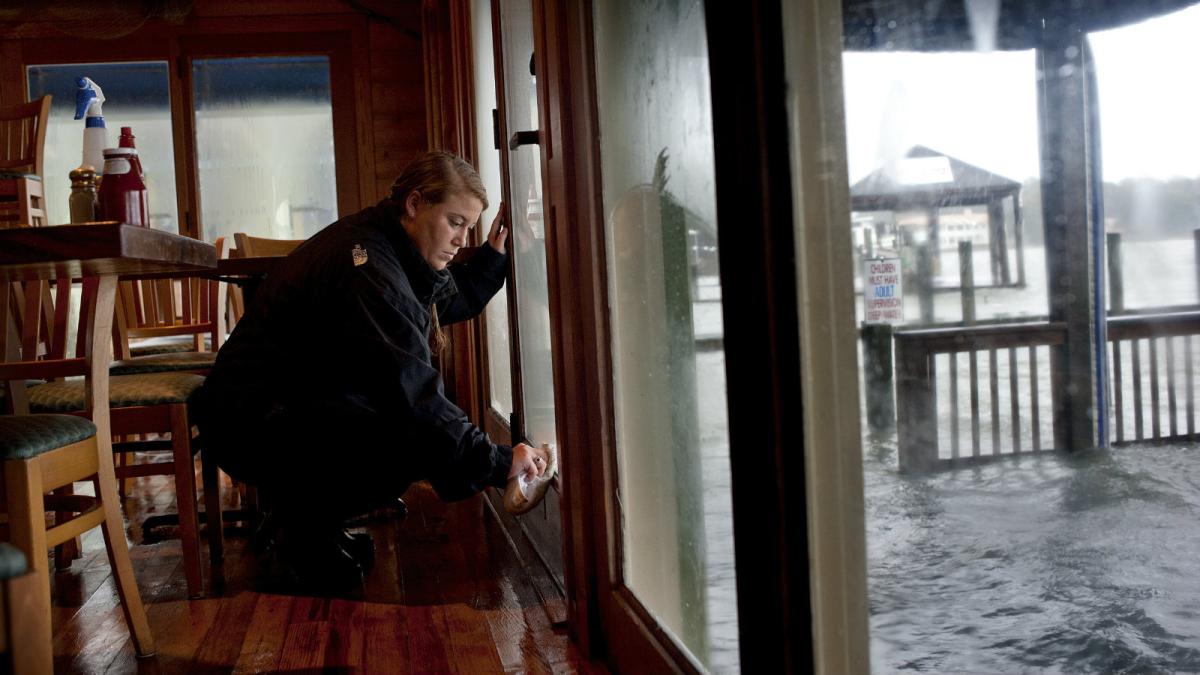No one has to convince Tuere Brown that climate change is real. Like many of her neighbors, Brown has grown accustomed to the tide-induced flooding that can disrupt daily life in Virginia’s Hampton Roads region, where a sinking shoreline meets a sea level now 15 inches higher than it was 80 years ago — thanks to melting Arctic glaciers and changes in ocean currents.
Over the past year, the Chesapeake, Virginia, teacher has been caught four times in what climate scientists here classify as “minor” flooding, the kind that forces people indoors, washes over cars, and submerges roads. In neighboring Norfolk, the city most vulnerable to sea-level rise on the East Coast, people say the water seems to spring up from underground, gushing out of manholes, floorboards, and yards.
“The flooding is definitely changing and getting more drastic,” said Brown, who in the wake of Hurricane Matthew last month found swamp water lapping at the front door of her in-laws’ house across town. For two days, the family watched residents of the city’s Deep Creek neighborhood paddle canoes in the streets. When Brown’s father-in-law fell ill, paramedics shuttled him to an ambulance by boat.Read more
